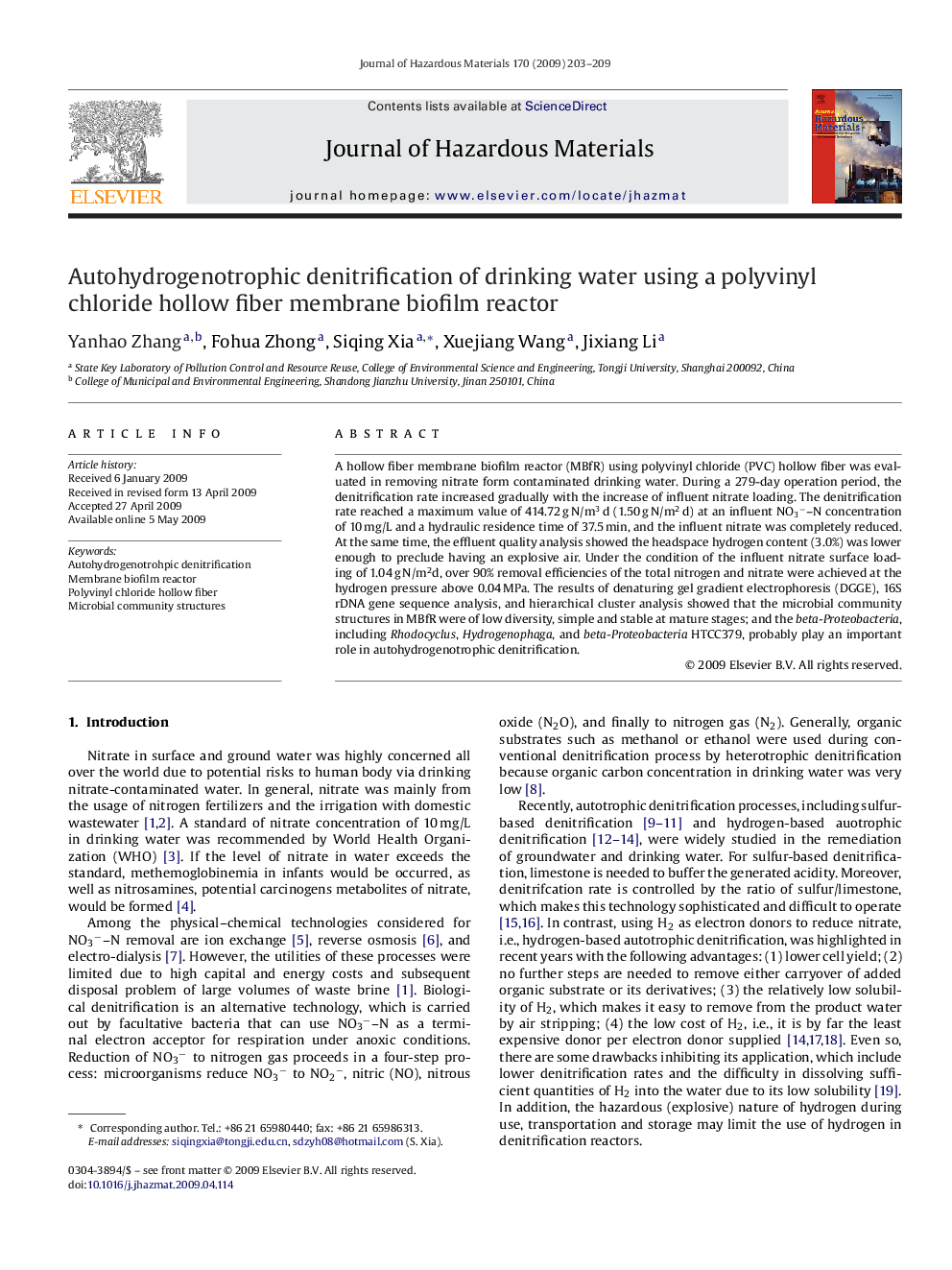| Article ID | Journal | Published Year | Pages | File Type |
|---|---|---|---|---|
| 581413 | Journal of Hazardous Materials | 2009 | 7 Pages |
Abstract
A hollow fiber membrane biofilm reactor (MBfR) using polyvinyl chloride (PVC) hollow fiber was evaluated in removing nitrate form contaminated drinking water. During a 279-day operation period, the denitrification rate increased gradually with the increase of influent nitrate loading. The denitrification rate reached a maximum value of 414.72 g N/m3 d (1.50 g N/m2 d) at an influent NO3â-N concentration of 10 mg/L and a hydraulic residence time of 37.5 min, and the influent nitrate was completely reduced. At the same time, the effluent quality analysis showed the headspace hydrogen content (3.0%) was lower enough to preclude having an explosive air. Under the condition of the influent nitrate surface loading of 1.04 g N/m2d, over 90% removal efficiencies of the total nitrogen and nitrate were achieved at the hydrogen pressure above 0.04 MPa. The results of denaturing gel gradient electrophoresis (DGGE), 16S rDNA gene sequence analysis, and hierarchical cluster analysis showed that the microbial community structures in MBfR were of low diversity, simple and stable at mature stages; and the beta-Proteobacteria, including Rhodocyclus, Hydrogenophaga, and beta-Proteobacteria HTCC379, probably play an important role in autohydrogenotrophic denitrification.
Related Topics
Physical Sciences and Engineering
Chemical Engineering
Chemical Health and Safety
Authors
Yanhao Zhang, Fohua Zhong, Siqing Xia, Xuejiang Wang, Jixiang Li,
